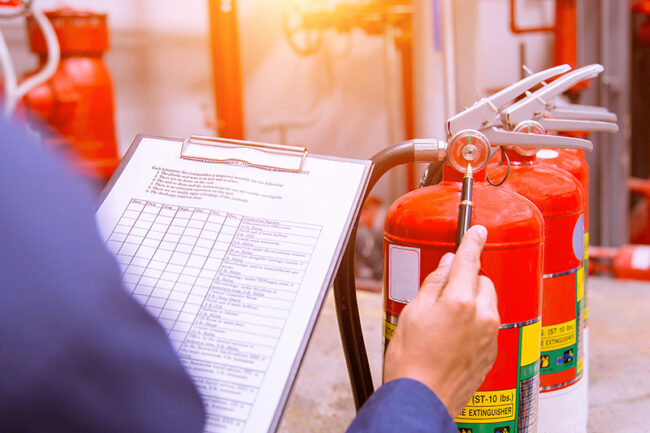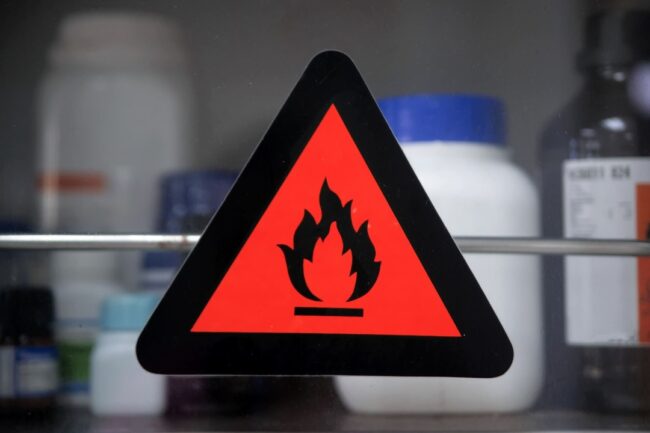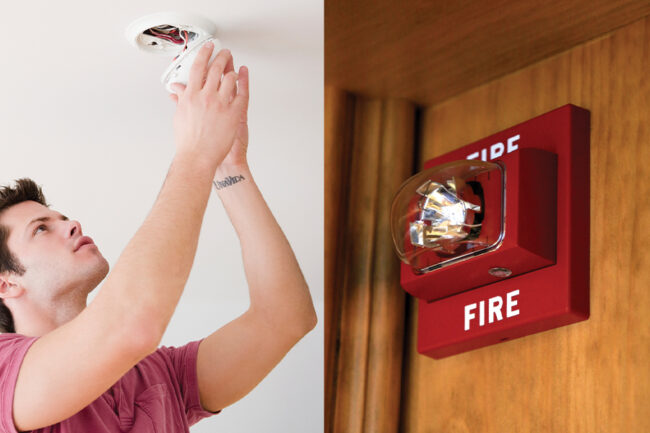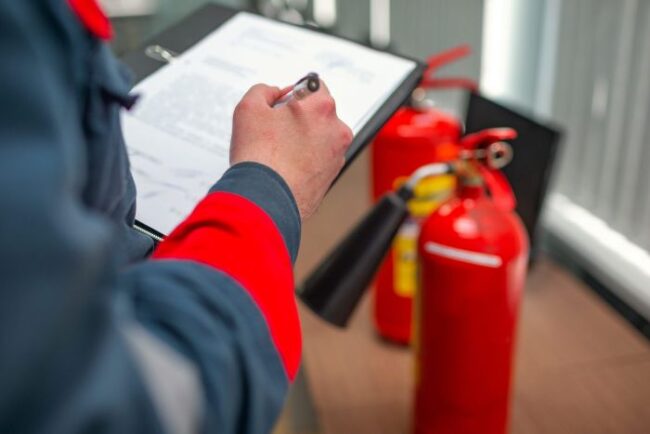Fire safety remains a paramount concern for owners and managers of non-domestic properties. Mandated by the Regulatory Reform (Fire Safety) Order 2005, conducting regular fire risk assessments is crucial for ensuring the safety of occupants and minimizing the risk of fires. This safety assurance process goes beyond smoke alarms and fire extinguisher installation.
Therefore, in this post, we’ve detailed the essential steps in executing a comprehensive fire risk assessment. By adhering to these steps, property owners and managers can create a safer environment for those who live, work, or visit their premises.
8 Steps to Conducting a Comprehensive Fire Risk Assessment

1. Identifying Potential Fire Hazards
The first step towards a thorough fire risk assessment is the identification of potential fire hazards within the property. The triumvirate of heat, fuel, and oxygen forms the basis for fire occurrence and propagation. Consequently, it is imperative to scrutinise the interplay of these elements within the property and identify potential ignition sources and combustible materials.
Electrical equipment, such as heaters and computers, can serve as ignition sources, while textiles or paper in close proximity can exacerbate a fire. Common fire hazards also include flammable liquids, faulty wiring, blocked fire exits, or inadequate storage of combustible materials.
2. Assessing People at Risk
Once potential fire hazards are identified, evaluating the individuals at risk within the property becomes paramount. Although all occupants are vulnerable during a fire, certain groups face higher risks.
Factors such as working with hazardous materials, occupying secluded areas, working night shifts, or being unfamiliar with the property warrant special attention. Moreover, vulnerable groups, including children, older adults, and people with disabilities, require specific considerations.
3. Evaluating and Reducing Risks

Following the identification of fire hazards and assessment of vulnerable individuals, a meticulous evaluation of risks is essential. A comprehensive analysis of the hazards present in the environment enables effective elimination or substantial reduction of these risks.
Hence, implementing safety precautions such as proper storage of flammable materials, regular maintenance of electrical equipment, and the installation of fire alarms and extinguishers is crucial.
4. Recording, Planning, and Training
Legal requirements stipulate that businesses with five or more employees or holding a license must maintain a written record of their fire risk assessment. This record should document all identified fire hazards and the measures undertaken to mitigate them.
Additionally, comprehensive plans must be created detailing the actions to be taken in the event of a fire, including evacuation procedures and escape routes. Ensuring that all employees are informed of these plans and receive adequate training on fire safety protocols is of paramount importance.
5. Implementing Fire Suppression Systems
In properties with a heightened risk of fire incidents, the installation of fire suppression systems goes beyond the standard fire safety measures. Fire suppression systems, such as sprinklers, are highly effective in swiftly extinguishing fires or containing them until emergency responders arrive.
These systems respond to the early stages of a fire, preventing it from escalating into a large-scale disaster. Sprinklers are strategically placed throughout the property, and upon detecting heat or smoke, they release water, suppressing the flames and minimizing fire-related damages.
By integrating fire suppression systems with traditional fire safety measures like smoke alarms and extinguishers, property owners significantly increase the chances of effectively combating fires. This additional layer of protection not only safeguards the property but also ensures the safety of its occupants, providing valuable time for evacuation and reducing the potential for injuries or fatalities.
6. Regular Inspections and Maintenance

Maintaining the efficacy of fire safety measures requires diligence and regular inspections. Scheduled inspections of fire safety equipment, such as fire alarms, extinguishers, and fire suppression systems, are imperative to identify any defects or malfunctions promptly. A malfunctioning fire safety device can render it useless during an emergency, compromising the overall fire safety strategy.
Qualified professionals should conduct routine maintenance and servicing of fire safety equipment to ensure that everything is in optimal working condition. This practice ensures that these systems will perform flawlessly when called upon, giving occupants the confidence that they are well-protected.
Additionally, property owners should keep detailed records of maintenance checks to track the status of fire safety systems over time, identifying patterns and taking corrective actions promptly.
7. Promoting a Fire Safety Culture
Beyond physical fire safety measures, fostering a fire safety culture within the property is essential to create an environment where everyone takes an active role in fire prevention and response. Fire safety training sessions and workshops can educate occupants about potential fire hazards and the best practices to prevent fires from occurring.
Regular drills and simulations will ensure that all occupants are familiar with evacuation procedures and escape routes, which can be critical during an emergency.
Promoting a fire safety culture means instilling a sense of collective responsibility in all occupants. Encouraging occupants to report potential fire hazards and empowering them to take appropriate actions in case of an emergency creates a proactive and safety-conscious community.
Well-labeled fire safety signage throughout the property further reinforces the fire safety culture, providing clear directions and guidance during critical moments.
8. Regular Review and Updates
Conducting a fire risk assessment should not be viewed as a one-time obligation. It necessitates scheduling periodic assessments and reviewing and updating your fire safety system immediately after changes arise.
These changes may include; renovations, new equipment installations, or alterations in occupancy. Regular reassessment of the risk assessment and subsequent training of staff is imperative.
Conclusion

Conducting a comprehensive fire risk assessment is not only a legal obligation for owners and managers of non-domestic properties but also a moral imperative. By following the steps outlined in this article, you can identify and mitigate potential fire hazards, assess individuals, and formulate procedures to ensure the safety of all occupants.
For further local inquiries, you can search something like “fire risk assessments Croydon” and get detailed information.
